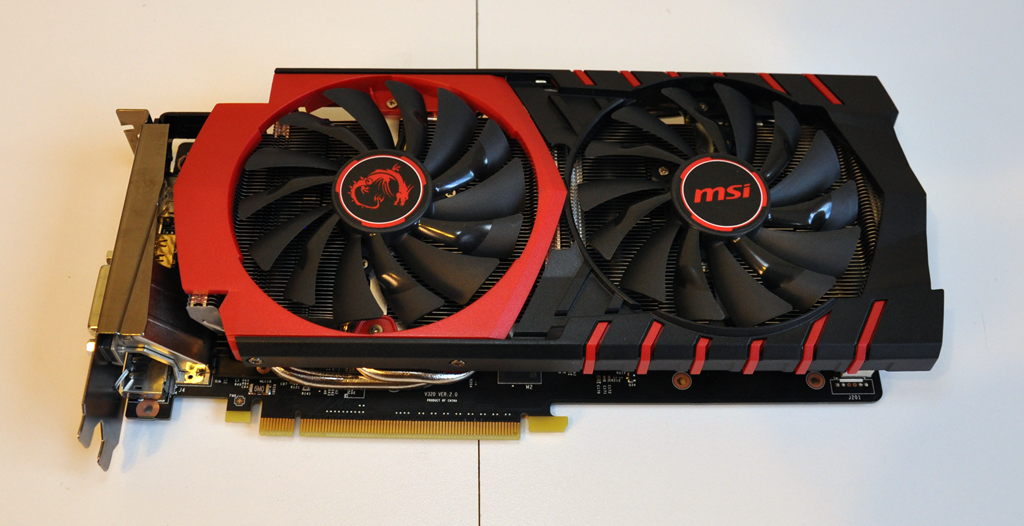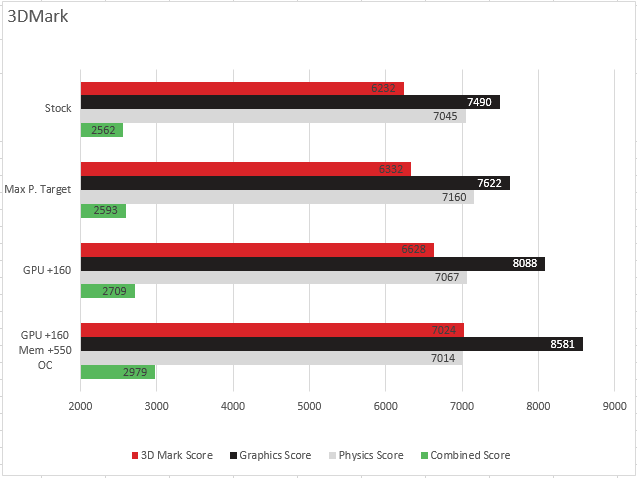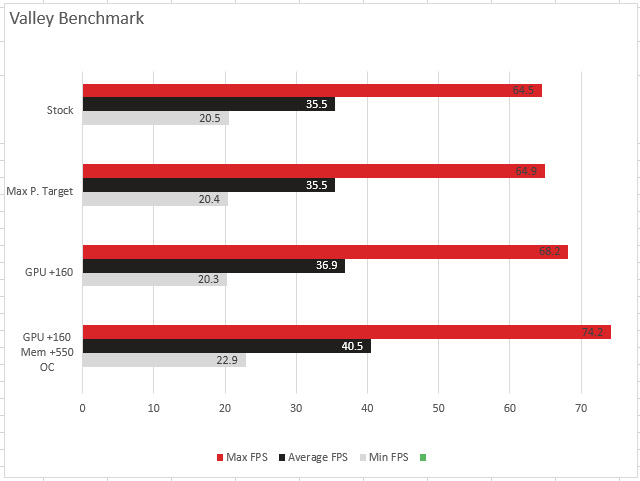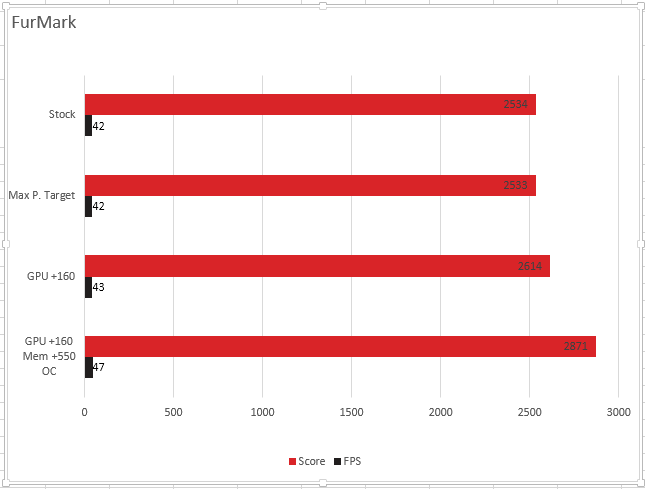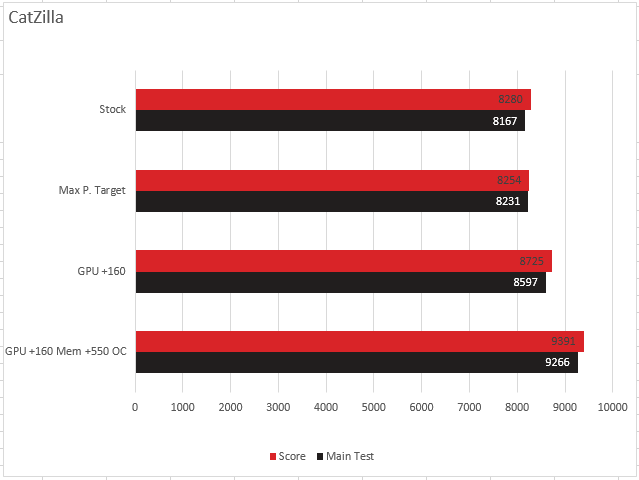Synthetic Benchmarks
While they don’t actually give any kind of insight into real-world gameplay experience, synthetic benchmarks offer the ability to compare the exact same series of events over a number of repeated runs. No matter how much you try, you’ll never get the same kind of comparison with actual gameplay; there are just too many variables involved. For those reasons we also include a number of these tests for comparison.
3DMark
The top dog in this space is 3DMark, which most of you are likely familiar with. There are a number of different tests to run, but for our purposes we’ll be running FireStrike which is designed for 1080p gaming.
3DMark definitely favors every bit of power and bandwidth you can throw at it. This was the only test that really had a noticeably effect for simply chaning the power target. Each increment of the overclocking proccess netted an improved score as seen by the above graph.
Unigine Valley
Unigine has been putting out quality graphics benchmark tests for a number of years now. Their most recent being the Valley Benchmark. This test runs through a number of different scenarios, taxing different aspects of the graphics cards capabilities. We ran the test using the Extreme HD preset which sets everything on high, and the resolution at 1080p.
Memory clock speed seems to be the key to success in Valley. The frame rate increase was so minimal with just the GPU overclocked that its just outside of the margin of error. Looking at the overclocked memory we see a sizeable boost in performace.
FurMark
FurMark is a much less known benchmark test. Its primary task is rendering fur on a ball. While not very exciting to look at, the test can tax your system beyond most other tests. We use it mostly for stability testing. If an overclock can pass this test, it’s almost a guarantee there won’t be any trouble in other tests.
This test LOVES memory throughput, but didn’t really care to much about the GPU. As you can see the score jumped quite a bit, as did the frame rate once we overclocked the memory.
Catzilla
If FurMark is unknown to you, you’ve likely never heard of Catzilla. This is a very scarcely-known benchmarking tool, but it does a great job at testing a number of things, while also being very entertaining to watch. Physics, Fur, Fluid and Raymarch are all compared in this test.
Catzilla doesn’t care if the power target is raised, but it will take as much bandwidth as it can. Increasing the clock speed of the memory really bumped the scores in this test.

